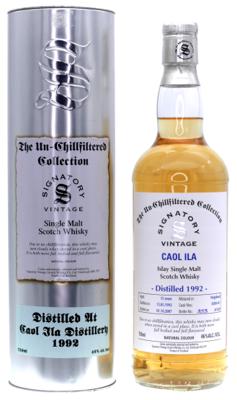|
|
Release Notes
An independent single cask bottling of an excellent 15yo. Caol Ila.
Yours Truly
3rd Party Tasting Notes
Nose: Dried plums.
Palate: Trail mix and burnt pepper steak. Not back at all. Has an organic flavor with a long if not entirely tasty finish. Not too bad at 46%.
Rating: B-
Palate: Trail mix and burnt pepper steak. Not back at all. Has an organic flavor with a long if not entirely tasty finish. Not too bad at 46%.
Rating: B-
Andy, LA Whisky Society
The Bottler: Signatory Vintage
| Established: 1988 |
| Silent since: False |
| Address: Edradour Distillery, Pitlochry, Perthshire & Kinross, PH16 5JP, Scotland |
Signatory owns the smallest distillery from Scotland, Edradour since 22 july 2002
In April 1992, as the company began to grow, they moved to much larger premises. Here, they were granted a licence to bottle their own products on site. They set-up a small line bottling system, primarily geared towards the bottling of single casks. Although the actual bottling of whisky is semi-automated, the emphasis is very much a hands-on operation, with hand labeling and packing of products. To add to the exclusivity of their bottlings, they often declare the cask number, date of distillation,and date of bottling on our labels. In addition,each bottle is individually hand numbered.
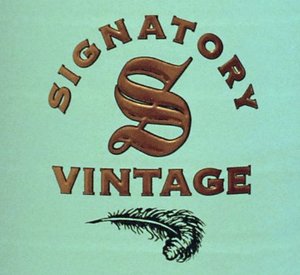
It is their aim, as an independent bottler to offer a range of whiskies, some of which are not bottled by the proprietor of a particular distillery, and some at different ages/strengths to those offered as distillery bottlings. The majority of their bottlings are the product of single casks, with the malt whisky enthusiast being given the opportunity to sample the subtle differences which occur with each different cask.
The name of Signatory derived from the fact that their initial intention was to find someone famous to sign the labels for bottles produced from one single cask. The first cask we purchased was a cask of 1968 Glenlivet, which was sold long before we could find a famous person.
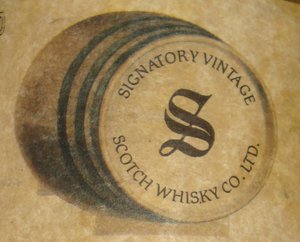
Until April 1992, when they moved to their current premises in Newhaven (Edinburgh), they operated from a bonded warehouse in Leith. Leith was once a well known port for importing wine from France. As this industry declined, many of the whisky companies began to occupy the old warehouses for cask storage purposes. In recent years, this has also declined, with the larger companies moving to the west of Edinburgh, where transport links are better.
The company was founded in 1988. It is a family owned and managed company, being one of only three true independent bottlers. They always like to draw a distinction between the independent companies who bottle their own products, and the independent companies whose products are bottled under contract. The other fully independent bottlers are: Gordon & MacPhail and Wm. Cadenhead.
from Whisky-Distilleries.info
The Distillery: Caol Ila
| Established: 1846 |
| Silent since: False |
| Address: Port Askaig, Isle Of Islay PA46 7RL, United Kingdom |
| → website |
2009 - A ten years old version of the unpeated variety is released at an even higher cask strength than the 8yo.
The Caol Ila distillery on Islay is located near Port Askaig, on the northeast corner of the island. It"s quite isolated, it"s closest neighbor being the Bunnahabhain distillery. Caol Ila was built in 1846 by Hector Henderson who also owned the old Camlachie distillery in Glasgow.
Although the profile of Caol Ila as a single malt has been enhanced in recent years, the main function of the distillery is still the production of malt whiskies for the Johnnie Walker blends. It might surprise you to learn that part of that whisky is actually unpeated - while Caol Ila is known mostly for their peated whiskies. The distillery actually started with trial runs with unpeated whisky in the 1980"s; the so-called "Highland" Caol Ila. For circa two decades this whisky was used almost exclusively for blends, but in 2006 it was introduced as an 8 years old single malt.
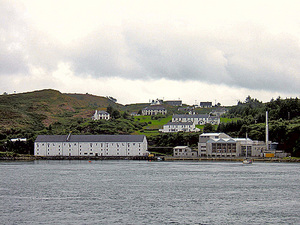
In the new Millenium
The Caol Ila distillery became part of the United Distillers conglommerate in 1986. In 1989 the first "semi-official" bottling of Caol Ila was released in the "Fauna & Flora" range. This would be the only official bottling in a long time (not counting the releases in UDV"s "Rare Malts" series). Fortunately, official bottlings are widely available these days.
Caol Ila"s current "core range" was introduced in 2002. Apart from the standard 12yo, 18yo and Cask Strength bottlings, Diageo releases occasional single cask bottlings as well. When casks of Lagavulin and Laphroaig became harder to acquire after the year 2000, independent bottlers started to release more and more private and "bastard" bottlings too.
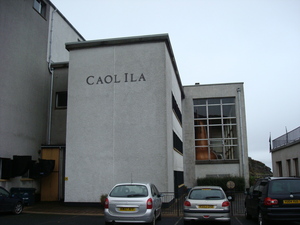
Consecutive owners included Henderson, Lamont & Co (1852-1854), Norman Buchanan (1863-1879) and Bulloch, Lade & Co (proprietors of Camlachie) who rebuilt and expanded the distillery. Caol Ila was liquidated and sold to J. P. O"Brien Ltd in 1920, who in turn sold it to Caol Ila Distillery Co Ltd. the same year. DCL took control in 1927 and transferred Caol Ila to SMD in 1930 who shut it down. Caol Ila was silent until 1937 and had to close down during part of WWII as well.
These were the only periods Caol Ila was silent; despite the many changes in ownership Caol Ila has been in production almost constantly since 1846. After World War II, things proceeded relatively uneventful at Caol Ila for a few decades before it was rebuilt and extended from two to six stills between 1972 and 1974. The distillery was completely rebuilt in order to meet increased demand from the blenders, only the warehouses (still filled with maturing whisky) were spared. After 1974 Caol Ila started to buy their malted barley from the Port Ellen maltings. Some connoisseurs make a clear distinction between the heavier "old" Caol Ila that was produced before 1972 and the lighter, cleaner spirit that was distilled after the expansion in 1974.
2002 - Caol Ila has been one of Diageo"s "volume" distilleries for quite some time. Consequentially, the only (semi-) official releases were a "Flora & Fauna" bottling and a few "UD Rare Malts" expressions. However, at the start of the new millennium Diageo decided that they wanted to strengthen the Caol Ila brand. They introduced a range of official bottlings; the "standard" 12 years old, an 18 years old and a cask strength version (no age statement).
2006 - The Caol Ila "Unpeated" (formerly known as "Caol Ila Highland" to blenders) is released as a 8yo.
Trivia:
- The name Caol Ila (pronounced as "kul-eela" and easily misspelled as Coal Ila) is Gaelic for "Sound of Islay" and is probably inspired by the location of the distillery along the stretch of water between Islay and Jura.
- Caol Ila is the largest distillery on Islay by far; with an annual production capacity of almost 4 million litres of pure alcohol per year - about a quarter of all malt whisky that is distilled on the island. As such, Caol Ila"s capacity dwarfs well known malt whisky brands like Longmorn, Glenfarclas, Highland Park, Laphroaig and Lagavulin.
- Although there is a three storey warehouse on the distillery grounds, these days the entire production is sent to the mainland via tanker trucks. So, young Caol Ila is not filled and matured on Islay.
- After the distillery was remodeled and expanded in 1974 to better suit the needs of blenders Caol Ila introduced a novel new whisky for blenders in the mid 1980"s: an unpeated malt whisky known as "Caol Ila Highland ". This product was intended for blending and most (if not all) casks would thus have gone to blenders for, erm... blending. However, in 1999 Caol Ila resumed production of unpeated whisky for the "single malt" market. These bottlings became available in 2006 or 2007 when Diageo released the first bottling of the Caol Ila 8 Years Old "Unpeated". Since most blenders were not in the habit of storing their casks for very long (with the exception of Douglas Laing, perhaps) there probably are not that many casks of the unpeated Caol Ila Highland around - if any at all...
from Malt Madness
The Owner: Diageo
| Established: 1997 |
| Silent since: False |
| Address: 8 Henrietta Place, London, W1G ONB, UK |
| → website |
Diageo also distributes Unicum, its lighter-bodied variant Zwack and Jose Cuervo tequila products in North America. However, Cuervo operates as a separate company in Mexico and is not owned by Diageo. Similarly Grand Marnier is distributed by Diageo in many markets, including exclusively in Canada, and a deal was reached in 2009 to significantly expand this partnership in Europe.
Furthermore, Diageo owns the Gleneagles Hotel.
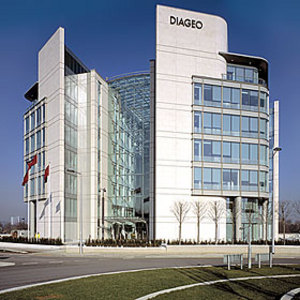
Diageo was formed in 1997 from the merger of Guinness plc and Grand Metropolitan plc. The creation was driven by the two executives Anthony Greener and Philip Yea at Guinness plus George Bull and John McGrath of Grand Metropolitan. The product portfolios of Guinness and Grand Met were largely complementary with little overlap.
Diageo is the world"s biggest whisky producer with 28 malt distilleries and two grain distilleries.The company operates the Scotch whisky distilleries of Auchroisk, Benrinnes, Blair Athol (situated at Pitlochry), Caol Ila, Cardhu, Knockando, Glen Elgin, Clynelish, Cragganmore, Dalwhinnie, Glenkinchie, Glen Ord, Lagavulin, Oban, Royal Lochnagar, Strathmill, Talisker, Teaninich, Mannochmore, Mortlach and Glenlossie, which are sold not only under their own name but used to make the various blended scotch whiskies sold by the company, and owns the stock of many closed distilleries such as Port Ellen, Rosebank, Brora, Convalmore, Glen Albyn, North Brechin, Banff, and Linlithgow. The company have opened a new malt distillery adjacent to their maltings at Roseisle (1st new make spirit produced Spring 2009). This will be one of the largest malt distilleries in Scotland. The new building contains 14 traditional copper pot stills. An expansion programme is also underway at its Cameron Bridge Grain Distillery in Fife that will make it the largest grain distillery in Scotland. Diageo also owns the Port Dundas Grain Distillery in Glasgow, and jointly operates the North British Grain Distillery in Gorgie, Edinburgh, with The Edrington Group.
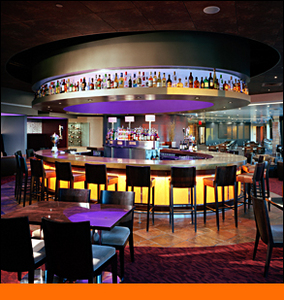
Diageo plc (LSE: DGE, NYSE: DEO) is the largest multinational beer, wine and spirits company in the world. The company is listed on the London Stock Exchange and has American Depositary Receipts listed on the New York Stock Exchange. The word Diageo was formed from the Latin dia (day) and the Greek geo (World), symbolising the use of the company"s brands every day, everywhere. Its head office is located in the City of Westminster in London. It is a constituent of the FTSE 100 Index.
Trivia:
- In December 2003, Diageo provoked controversy over its decision to change its Cardhu brand Scotch whisky from a single malt to a vatted malt (also known as a pure malt) whilst retaining the original name and bottle style. Diageo took this action because it did not have sufficient reserves to meet demand in the Spanish market, where Cardhu had been successful. After a meeting of producers, Diageo agreed to make changes.
- In 2006, the Cardhu brand quietly changed back to being a single malt.
- In July 2009, Diageo announced that, after nearly 200 years of association with the town of Kilmarnock, they would be closing the Johnnie Walker blending and bottling plant as part of restructuring to the business. This would make 700 workers unemployed and caused outrage from press, local people and politicians. A campaign against this decision was launched by the local SNP MSP Willie Coffey and Labour MP Des Browne. A petition was drawn up against the Diageo plans, which also involves the closure of the historic Port Dundas Grain Distillery in Glasgow.
- In February 2009 it was reported in the Guardian that the company had restructured itself so as to avoid paying tax in the U.K., despite much of its profits being generated in the U.K.
- Diageo is engaged in a tax scheme in the United States of America, commonly referred to as the "Rum Bailout", which will guarantee it USD$3 billion in revenues and profits.
- The National Puerto Rican Coalitionplans to run a series of ads in New York City and Puerto Rico urging a boycott of Diageo-owned alcoholic drinks to protest the giant British-owned corporation"s controversial production move of its Captain Morgan rum from Puerto Rico to the U.S. Virgin Islands.
from Wikipedia
